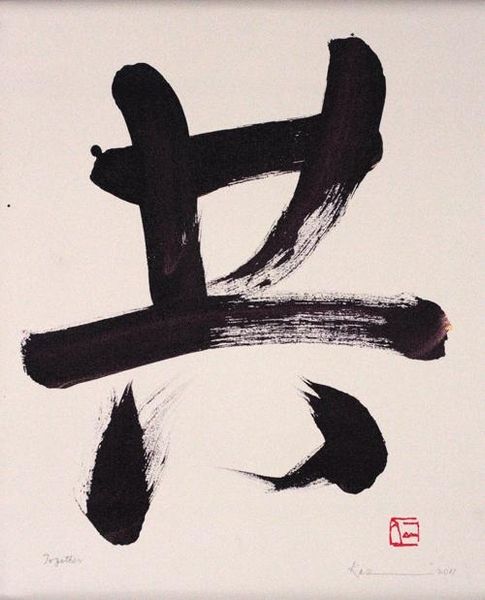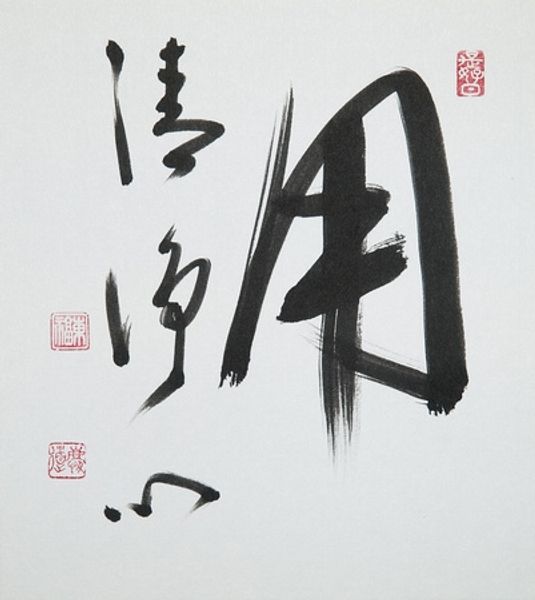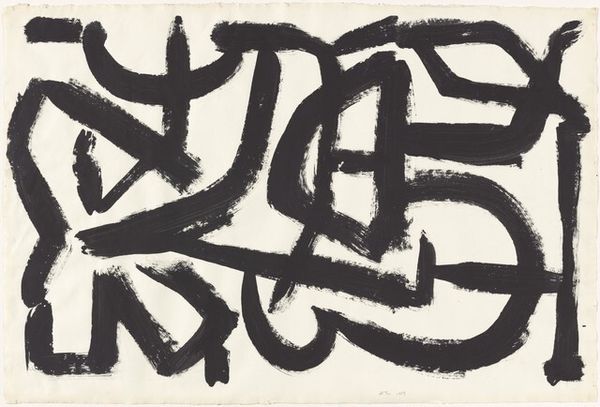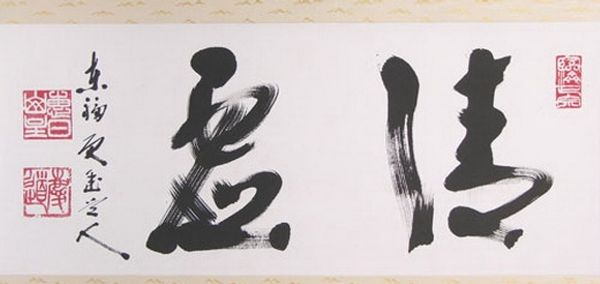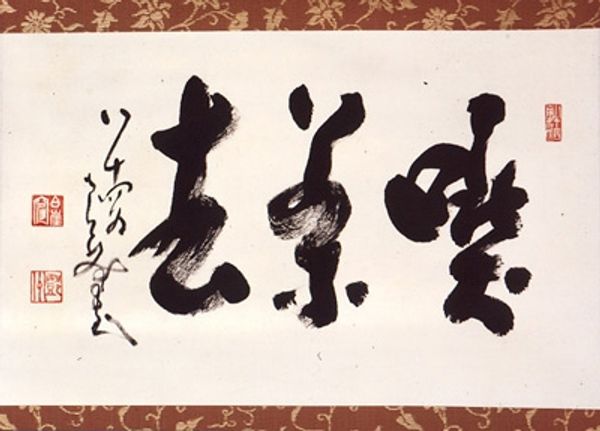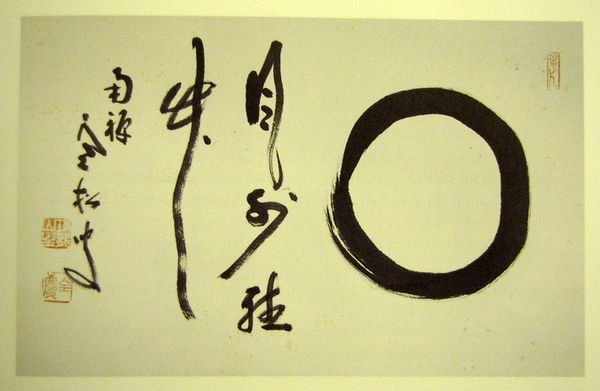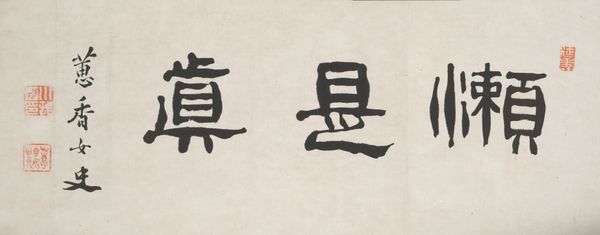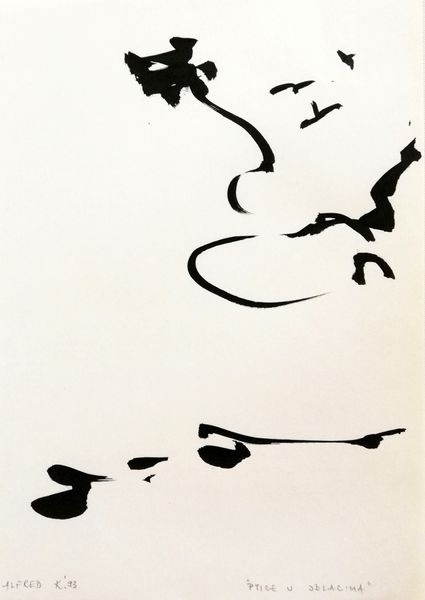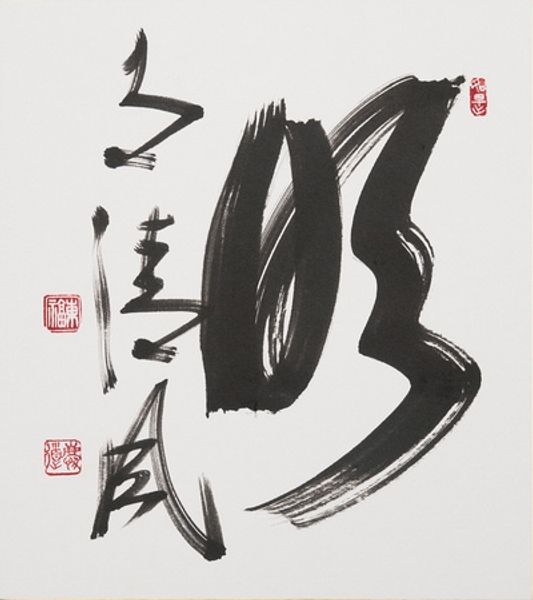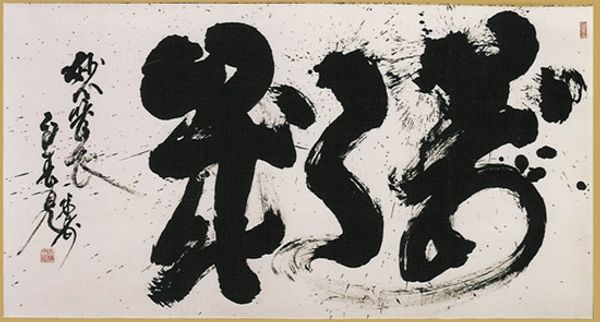
ink
#
asian-art
#
ink
#
abstraction
#
line
#
calligraphy
Copyright: Keido Fukushima,Fair Use
Editor: Here we have Keido Fukushima's "Calligraphy," created using ink. The starkness of the black ink against the white background is quite striking. It feels very Zen, in a way. What do you see in this piece from a historical perspective? Curator: Well, beyond its immediate aesthetic appeal, calligraphy like this serves as a profound reflection of cultural values and historical context. Ink, in East Asian traditions, has been the principal medium for the scholar class. To truly appreciate this work, one needs to recognize its role in both individual spiritual discipline and communal visual language. Do you think contemporary audiences fully appreciate that weight of tradition when viewing something like this in a gallery setting? Editor: Probably not, to be honest. I think a lot of people, myself included, see it as aesthetically pleasing, without grasping the historical implications you're describing. Is there an element of social hierarchy within this work, considering it's an art form traditionally practised by the elite? Curator: Absolutely. The work's elegance and skillful execution signified a particular social standing and cultivation. Beyond this, consider how calligraphy served as a means of transmitting cultural values, historical narratives, and moral philosophies within specific socio-political systems. This particular artist's lineage would provide insight too; who were their teachers, their patrons, what schools of thought did they adhere to? Editor: So, the gallery space itself is a bit of a political act, taking an art form tied to a specific social structure and making it available, visually, to everyone? Curator: Precisely! The museum display reframes calligraphy as an object of art accessible to all, potentially altering its original significance and cultural weight, so what should that signify today? I am not sure... Editor: That's really interesting – food for thought! Thank you for offering a historical perspective and helping to reveal the significance behind what seems like just brush strokes on paper. Curator: It’s important to remember that artworks are always in dialogue with the present, even as they carry echoes of the past. I'm also so glad you got something from the information.
Comments
No comments
Be the first to comment and join the conversation on the ultimate creative platform.

